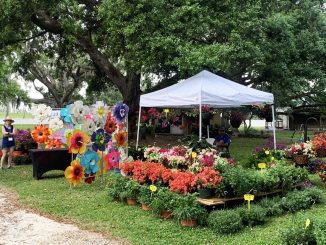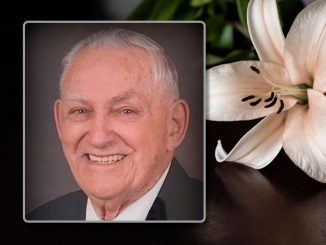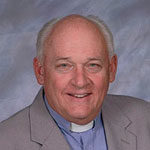
St. Anthony of the Desert was born in Coma, Lower Egypt about 251 AD. He was a man of severe austerity and personal holiness yet he lived to be over a 100-years-old. St. Athanasius wrote his biography entitled the “Life of St. Anthony” in 360.
Anthony’s parents were wealthy landowners who died when Anthony was about 18 years old. They left him a large inheritance to care for his unmarried sister. Jesus’ words in Matthew 19:21 resonated with him, “If you want to be perfect, go, sell what you have and give to the poor, and you will have treasures in heaven; then come, follow me.”
Anthony gave away and sold his property, donating the proceeds to the poor. He secured a place for his sister in a convent and became the disciple of a local hermit. He is often pictured with a pig because he allegedly worked for a while as a swineherd.
Anthony traveled to a desert region 60 miles west of Alexandria. He remained there for 13 years and earned the title of “Father of Monasticism” for his holiness and good example. Anthony attracted hundreds of men and women who venture into the desert to join his various small monastic communities.
Athanasius tells us that the devil attacked Anthony with boredom, laziness, and visions of women. Anthony fought these off with prayer and ascetic practices. He moved into a tomb residing there for some time.
He next went to a mountain region by the Nile called Pispir, where he lived isolated in an ancient Roman fort for about 20 years. While living in the fort he would not allow anyone in to see him, nor would he venture outside the walls of the fort. A small opening served as a passageway for food and without opening the doors he could listen to the visitors’ questions and offered spiritual advice.
After the many years in isolation, he decided to leave the fort and went to Fayyum, where he spread the Christian faith. In 311, Anthony went to Alexandria, where he visited the imprisoned persecuted Christians and supported them in their hardship. The governor saw that he was publicly proclaiming the Christian faith so he expelled him from the city.
He again returned to the Roman fort, where many people came to seek his advice. Anthony saw this as a distraction, so he left the fort and went deeper into the desert. He traveled for three days until he came upon a spring of water and some palm trees and settled there. It was only a matter of time until people were seeking his spiritual teachings. Later the monastery of Saint Anthony the Great was constructed there.
Anthony and his disciples both prayed and worked. They later compiled some of his spiritual advice into the book of “Sayings of the Desert Fathers.”
Word of Anthony’s holiness and wisdom reached Emperor Constantine, who wrote to him offering praise and requesting Anthony’s prayers. Anthony’s disciples were pleased with the letter, but Anthony did not respond to it. His brother monks urged him to answer the Emperor’s letter. He finally did and sent blessings to the emperor and offered prayers for peace and safety.
In 338, Anthony traveled to Alexandria to help Athanasius refute the teachings of Arius, who taught that Jesus was not divine. Though not a learned man, Anthony was still quite successful in admonishing the heretics and pointing out their errors.
Anthony wanted to be buried in an unmarked, secret grave. He died in 356, and they buried him on the mountain-top where he had lived. They discovered his body in 361, and brought it to Alexandria. Later, they took his remains from Alexandria to Constantinople, to avoid desecration and destruction by the invading Saracens. His feast day is January 17.





Be the first to comment